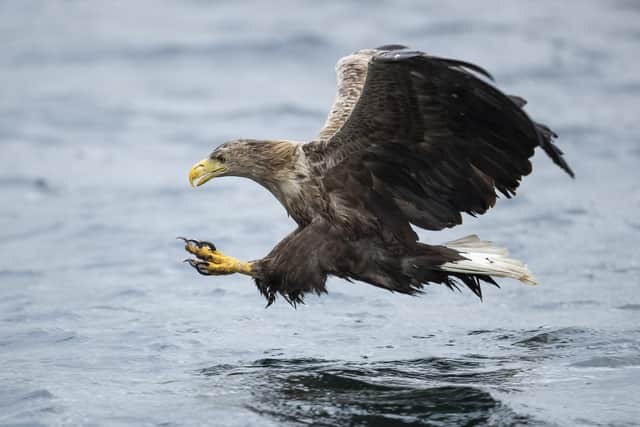From Glasgow’s Ruchill Park to Costa Rica, the beauty of nature can lift your spirits – Philip Lymbery
Treshnish on the Isle of Mull and sweeping meadows dance with colour. Backed by mountainous green hills punctured by jagged rock, carpets of flowers stretch to the sea. Whilst peering at orchids on my hands and knees, a shadow strokes past. Startled, I look up to see a magnificent white-tailed eagle, Scotland’s largest bird of prey, glided nonchalantly overhead. A magical memory from a lifetime spent fascinated by nature.
Whilst far-flung islands have a certain cachet, nature really is something you can enjoy anywhere, a thought brought home to me when I saw the incredible photos of ‘wee beasties’ in Glasgow’s Ruchill Park. Photographer David Hamilton found himself captivated by the treasure trove of vibrant colours, intricate details, and tiny creatures waiting to be discovered there. Shooting with a macro lens, he takes the most amazing portraits of the smallest animals, making them larger than life on his popular Instagram page, weemadbeasties.
Advertisement
Hide AdAdvertisement
Hide AdMore than 1,000 species are now on David’s tally for Scotland alone. He told the BBC: “Once I actually started seeing the sort of colours and the vibrancy of the insects, that was me hooked." Couldn’t agree more. It’s a stunning example of finding nature, and lots of it, on your doorstep.
‘Oasis of calm’
Another recent example is the walnut tree on the outskirts of Perth which was chosen as Scotland’s contender in the annual Tree of the Year competition by the Woodland Trust. That tree is estimated at 250 to 300 years old and stands in the rather ordinary setting of a car park on the A9 at Inveralmond. Regardless of location, admirers describe it as “exceptionally attractive”, offering an “oasis of calm amongst the bustle”.
The reality is that trees make us happy. They lift spirits, reduce anxiety, and are beneficial to our mental health. They have other superpowers too: reducing the impact of climate change, alleviating flooding, and reducing soil erosion. So, by rights, every tree should be Tree of the Year! Whether close to home or far away, trees provide homes for a rich multitude of wildlife.
Restoring nature


One reason to celebrate is the conservation work on Scottish wildcats in the Highlands. Known as the ‘Highland tiger’, about 20 specially bred wildcats have been released by conservationists to help save the species from extinction. In a landmark moment for nature restoration, the success of this project could well lead to optimism for other ambitious programmes. One such could be the reintroduction of the Eurasian lynx, 1,000 years since the species was hunted to extinction.
In my past life as a wildlife tour leader, I’ve taken people to places like Africa, Costa Rica, and the Seychelles to marvel at all that the natural world has to offer. Yet, I’ve also had some of my most memorable moments close to home. Whether it be a local park or coastal islands, there is a richness of new surprises just waiting to lift spirits. Whether reintroduced sea eagles, wildcats, everyday trees and ‘wee beasties’, one thing I’ll never forget: nature is amazing.
Philip Lymbery is chief executive of Compassion in World Farming, a former United Nations Food Systems Champion and an award-winning author. His latest book is Sixty Harvests Left: How to Reach a Nature-Friendly Future. Philip is on Twitter @philip_ciwf
Comments
Want to join the conversation? Please or to comment on this article.
